“You don’t confuse Formula One with go karting…and I know I’m F1.”
Karim Benzema made the news in late-March with an unflattering comparison between himself and fellow Frenchman Olivier Giroud, call the Chelsea forward a go-kart to his F1 car.
Regardless of your opinion on the Benzema/Giroud comparison, one thing that’s certain is that, if Benz is an F1 model, it’s time for some maintenance.
In fact, both he and Real Madrid could use a tune-up. Over the last few months of match play, the side has experienced a significant decline in attacking production. That got me wondering…is Benzema’s decline in production a personal slump or the product of a faltering tactical system?
This scout report will feature an in-depth look into Benzema’s performances through statistical and player performance analysis. Further, a tactical analysis of Real Madrid’s system will provide some key insights into the current issues, as well as the possible solutions for Benz and the team. There are a number of factors to consider, so let’s jump right into it.
Benzema’s style of play
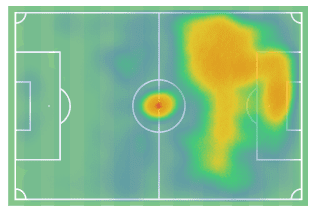
Benzema’s skill set features a tantalising blend of power and finesse. He’s a reliable target player with the size and strength to hold off any defender. Though not the fastest or quickest player, he utilises his power to win his individual matchups. There’s no questioning his nickname, Big Benz, when you watch him overwhelm defenders with his physicality.
Coupling his physical ability with his touch on the ball gives an indication of why Real Madrid have stuck with him through his highs and lows. Studying his heat map, you see a player who enjoys moving into the half spaces, particularly on the left, to participate in the build-up before popping up again in the box. He’s always had a preference for participation on the left-side on the pitch. During the Cristiano Ronaldo-era in Madrid, the two played off each other in brilliant fashion, creating space and sending the other to goal. Now, with Isco and Vinícius Júnior taking the bulk of the left-forward starts due to Eden Hazard’s injury, the pattern of Benzema’s involvement hasn’t changed, but the results certainly have.
Contrasting stats
In terms of goals and attacking production, Benzema has a 29% goal contribution in Real Madrid’s 27 La Liga matches. After the 15 December match against Valencia, his goal contribution reached 36%. The issue is that the goals have seemingly dried up, both from Real Madrid and Benzema.
Looking at the stats, that 15 December match against Valencia does represent a turning point in Madrid and Benzema. Despite a 10-match unbeaten streak, including an away draw at Barcelona and the Spanish Super Cup title, the goals scored and xG tell the story of a team struggling to find the back of the net. In the 11 La Liga matches since the Valencia match, six of Real’s 16 goals have come from set pieces and penalty kicks. That leaves them with a paltry 0.91 goals per match from the run of play.

This table features stats from La Liga, the UEFA Champions League and the Copa del Rey with a before and after comparison. After notching that 1-1 draw away at Valencia, Madrid had an excellent mark in goals and xG per 90, recording 2.14 and 1.99 respectively. From 15 December to the present, the statistics have noticeably declined across the board.

Worse, take away the Copa dey Rey matches against Unionistas de Salamanca, Real Zaragoza and Real Sociedad and the numbers drop considerably, especially with regards to prior La Liga and Champions League statistics. In fact, the numbers on the right side of the chart are very average. For a side with so much attacking talent, the numbers are shocking.

Benzema’s production mirrors that of the team. Just above this text is Benzema’s xG chart for the season. Each bar represents a game tally with 0.58 xG per game being his average. After a decent start to the season, he really found his form in October and put together a nice run through November and the first half of December. From mid-December onward, the results are staggering as he struggled to produce anything higher than a 0.2 xG per match.

Much the side as a whole, Benzema’s numbers have tanked. The direct comparison of his La Liga and UEFA Champions League stats show a decline of 78% in goals per 90. Accompanying that stat are downward trends in xG, assists, shots and shots on target per 90. There’s certainly an element of slump here, especially given the stark underperformance in xG to goals ratio.
But football isn’t a game played in isolation. While Benzema’s numbers have greatly declined, so has the club’s stats. To get to the bottom of the issue, we need to look beyond the statistics and engage personnel and tactical changes that have prompted this downward spiral.
Why is he less active in front of goal?
Analysis of Benzema’s play and his fit within Zidane’s tactics must examine the “why” that underlies Benzema’s style of play. Sure, he enjoys dropping into the midfield to help with the build-up. That drop involves positional interchanges with teammates and, yes, he does eventually make his way into the box. But why?
Let’s look at what he wants to achieve by dropping into the midfield. First, it is a way for him to stay active and get some touches on the ball. With lone strikers generally on an island, it is important to stay sharp for that moment they have to finish off a play. Second, dropping into the midfield is likely to take a defender with him, creating space for himself or a teammate behind the opposition lines. Third, he offers an outlet to a teammate. As a big target player, his ability to help a teammate out of a tough spot and keep the ball are incredibly important. Finally, the gaps that appear in the defence allow his teammates to experience greater success, allowing Benzema to move freely into the box.
If those are the primary reasons for dropping into the midfield, the next step is an analysis of the cooperative movements between Benzema and his teammates. A couple of years ago, when Benz dropped into the midfield, Ronaldo and Gareth Bale always had an eye on the big Frenchman’s movement. If he moved into their half space, he cued the wingers to attack the space vacated by Benzema. The result of this understanding between the BBC members was loads of goals and trophies. Benzema’s sacrifices were generally rewarded with negative passes or rebound opportunities that led to his own goal tally.
Fast forward to the current season and a few things are clear. First, the gap in talent and understanding is very clear. Whatever Madrid can currently muster on the wings, it simply doesn’t compare to the production of prime Ronaldo and Bale. Second, the available personnel don’t seem equipped to take advantage of the space created by Benzema. Third, the lack of cohesion means Benzema is still making those same checks into the midfield, at an even higher rate now, but the surrounding players have not adapted their tactical approach to accommodate Benzema. Each Madrid attacker is seemingly playing to his own strength rather than prioritising a cohesive whole.
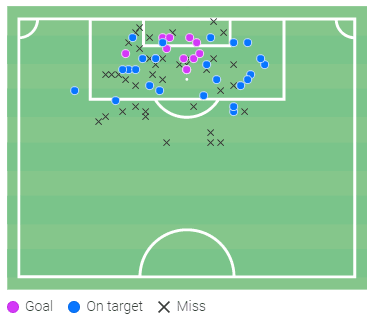
Benzema’s a service dependent player. Of his 18 goals in La Liga and the UEFA Champions League, eight featured a first touch finish, three apiece by penalty kick and open play header, two with his second touch and two from set pieces. He needs to be central as Madrid attack the box. His shot map shows that he’s a very effective poacher, but he’s probably not going to score from tough angles or distance. Of his 18 goals, only two have started with him working his way in from the wing.
For his part, Benzema would do well to stay closer to the central channel. This season, Madrid has only scored four goals when Benzema’s wide play has contributed to the move. However, as a central target player who can hold the ball and allow teammates to play off of him, the side has benefitted, scoring 11 goals.
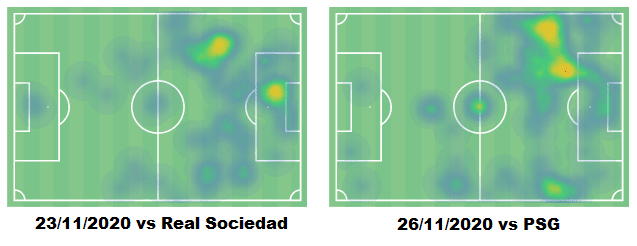
In two of his better performances, you can see Benzema still maintaining a presence on the wings, but there are clear spots on the heat map to indicate his central presence.
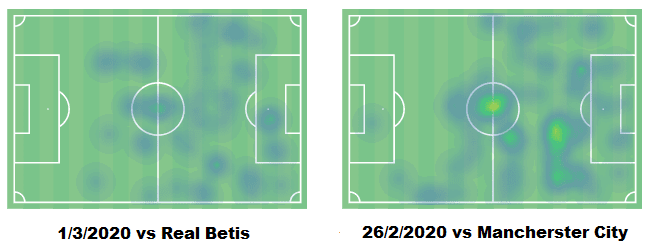
Compare those first two matches to these two. His performances were poor in these two and he offered little threat to goal. The match against Real Betis shows a very scattered performance, one where he desperately wanted to get on the ball. Against Manchester City, he offered a central presence in the build-up, but he was never in position to attack the goal. Given his deep positioning, he was unable to catch-up to his side’s more direct attacks.
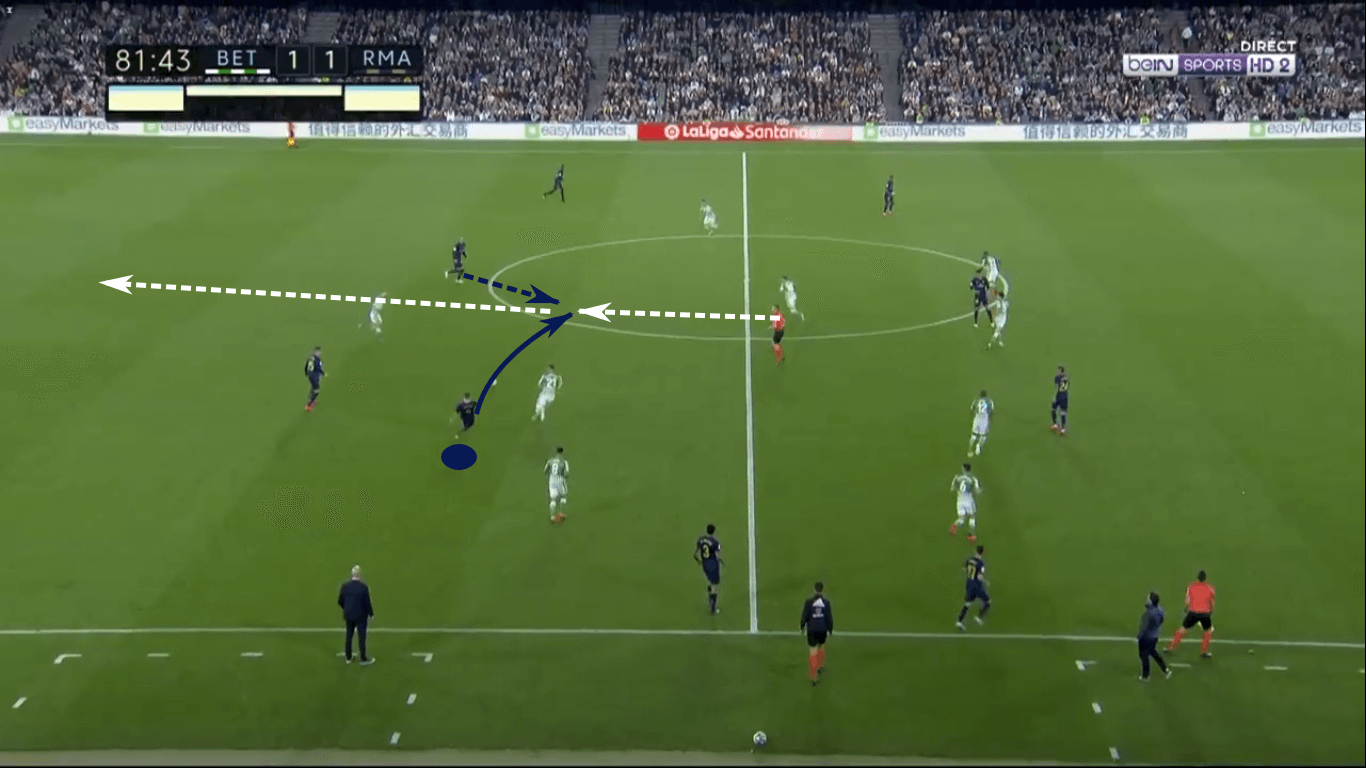
In fact, in the match against Betis, it was Benzema’s error in the build-up that gifted Betis the late winner. Though he enjoys participating in that phase of the attack, the highest line suffers due to a lack of runners in behind, plus his dropping into the midfield forces a midfielder, who’s probably better in the build-up, to interchange with him. When he drops so deep, the attacking shape is greatly altered and the side suffers.
Madrid is too slow in attack
One of the main issues with Madrid’s attack is the overwhelming prevalence of indirect attacking. Put on your armchair analysis coat and watch the side play. As you study their attacking moves, watch their attacking transitions and see how many passes are played negative to reset play. Once they’ve played negative, you’ll likely see the ball worked to Kroos or Ramos. They prefer to target the wings, usually playing the #7 or #11.
Play has already slowed due to the negative passes recycling play. That alone allows the defence to recover its shape. When the ball is played wide, the opponent can comfortably shift while the ball is en route. From there, look for Madrid to engage in a 1v1 duel. It’s typically the wide forward or overlapping outside-back who engages 1v1. To back this point, Real Madrid players account for six of the top 30 in 1v1s per 90 minutes, though only Bale ranks in the top 30 in 1v1 success.
At the very least, this sequence is slowing play, forcing Madrid into indirect attacks against low blocks. At worst, this pattern is predictable and easily defended. Given the singular Madridista presence on the 1v1 success leaderboard, it’s safe to conclude that these indirect attacks with heavy reliance on dribbling are stifling chance creation and goals. The lack of initiative to deviate from the pattern and play forward, especially when transitioning to attack, means the side must breakdown 10 or 11 players each time they attack. If the football data revolution has taught us anything, this is only adding to the goal-scoring burden.
Hazard’s absence doesn’t help matters. In fact, his injury on 26 November is highly significant. While the club was able to keep its momentum for a couple more weeks, the statistics with and without Hazard are quite telling of the Belgian’s significance. Despite a slow start to the season and poor production in most major stat categories, Hazard’s presence and participation in the build-up were key elements of the side’s success. When Hazard started, Madrid had an xG of 29.42, which averages out to 1.95 xG. Given his slow start to the season, I wondered what the club’s xG stats would look like if I filtered out the new signing’s first four matches. The jump is remarkable. Over the remaining 11 matches, Real recorded a 27.42 xG which equates to 2.49 xG per match. Those are elite numbers. As the charts have shown, Benzema was the direct beneficiary of the goal-scoring opportunities.
Without Hazard, Madrid have rotated Isco and Vinícius Júnior on the left. If Isco plays, he commonly pushes into the half space, freeing the outside-back to move higher up the wing. When Vinícius Júnior starts, he plays the role like a true winger. The issue with the Benzema/Isco combination is that the two players like to occupy the same space in the build-up, leaving the side without a high presence on the left, at least not before the defence can account for the oncoming outside-back and nullify his run. With Benzema and Vinícius Júnior starting, both players want the ball at their feet. Vinícius Júnior in particular wants to dribble at an opponent. The lack of understanding between the two shows, particularly since Vinícius Júnior doesn’t show a great enough understanding on when to make his runs in behind the defence.
On the right side of the pitch, the issues are all over the board. Rodrygo’s performances are highly inconsistent and Lucas Vázquez has been in and out of the lineup with limited success. Bale has lost form with the team averaging only 1.42 xG when he plays, and that doesn’t account for the xG accumulated once he has subbed off. Of the three players, he’s the one most likely to run off of Benzema.
Between Benzema dropping into the midfield and the wide players and midfielders not running into the space he’s vacated, attacking success is not coming easily. If, especially in those transitional moments, Madrid is playing to the checking runs of Benzema and Isco without runs behind the defence higher up the pitch, they’re sacrificing an opportunity to strike before the defence can organise. With Benz and Isco checking towards the ball, the next pass is almost always negative. Given that the other forward in the line of three is usually a dribbler, we now have a situation in which all three forwards want the ball played to feet rather than space. This allows the defence to keep everyone in front of them and keep the lines tight.
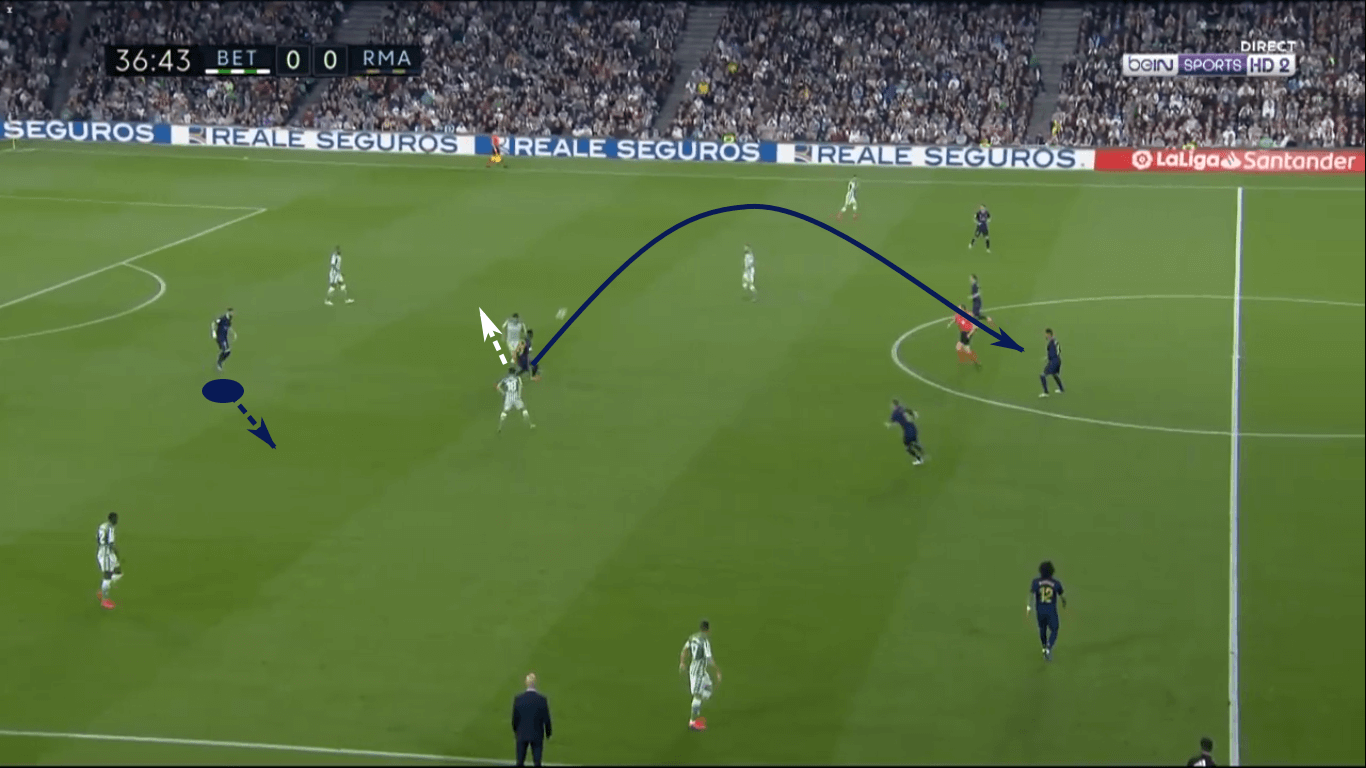
In the most recent match, Madrid travelled to Betis with the hope of retaining their status at the top of the table. You’ve already seen Benzema’s error that led the Betis’ winner, but now take a look at the capital side’s transitional attacking. After Vinícius Júnior deflected a pass into the air, Casemiro collected the ball, albeit with a poor first touch that allowed the ball to continue bouncing. You can already see Benzema backtracking.
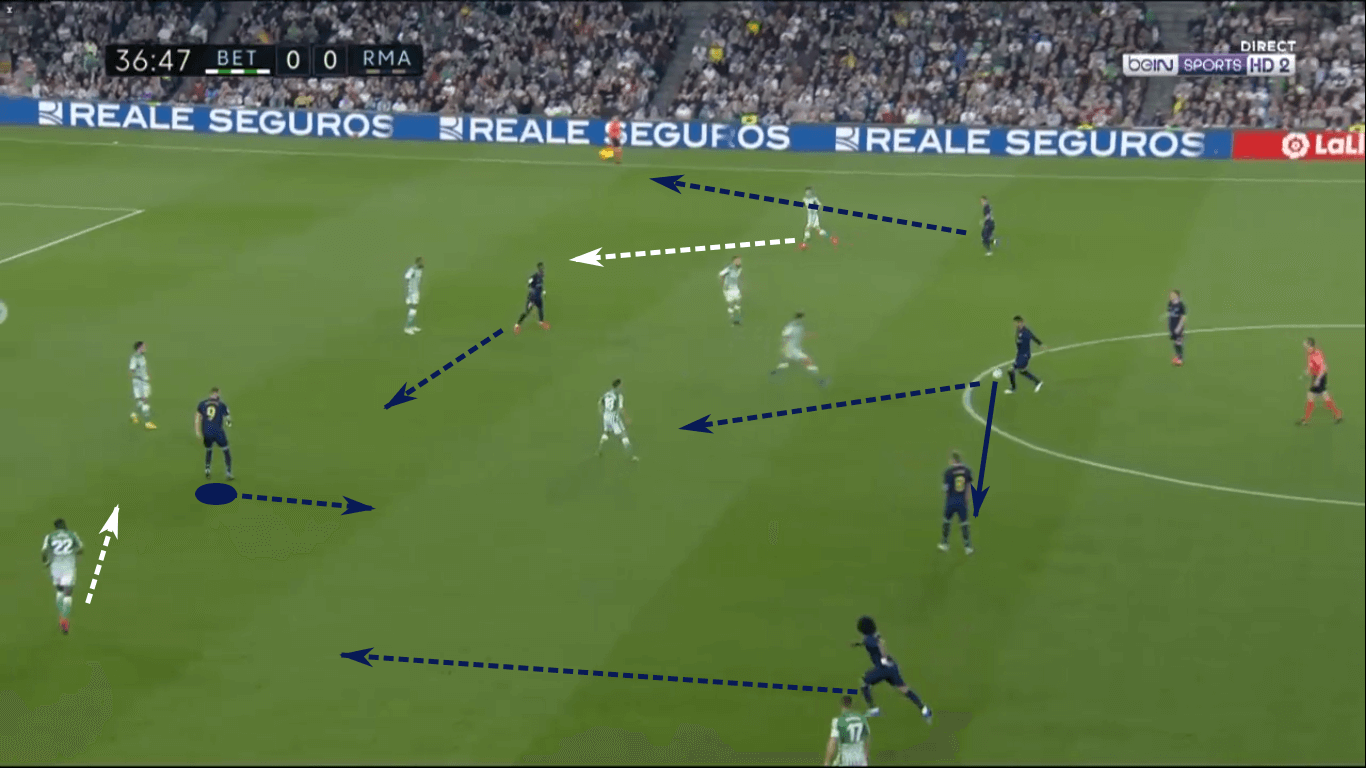
As Casemiro finally settled the ball, he missed an early opportunity to play forward early. That forced him laterally to Kroos. With the pass heading to the German, Marcelo shows attacking intent with a strong run forward. With Emerson moving centrally to help with Benzema, skipping Kroos to play Marcelo isn’t the worst option. Also, it’s worth noting here that, although Benzema checked back, he does offer an outlet and has great body orientation. He could offer Casemiro a better passing angle, but, like I said, the Brazilians first touch was poor and slowed play, limiting the angle to Benzema.
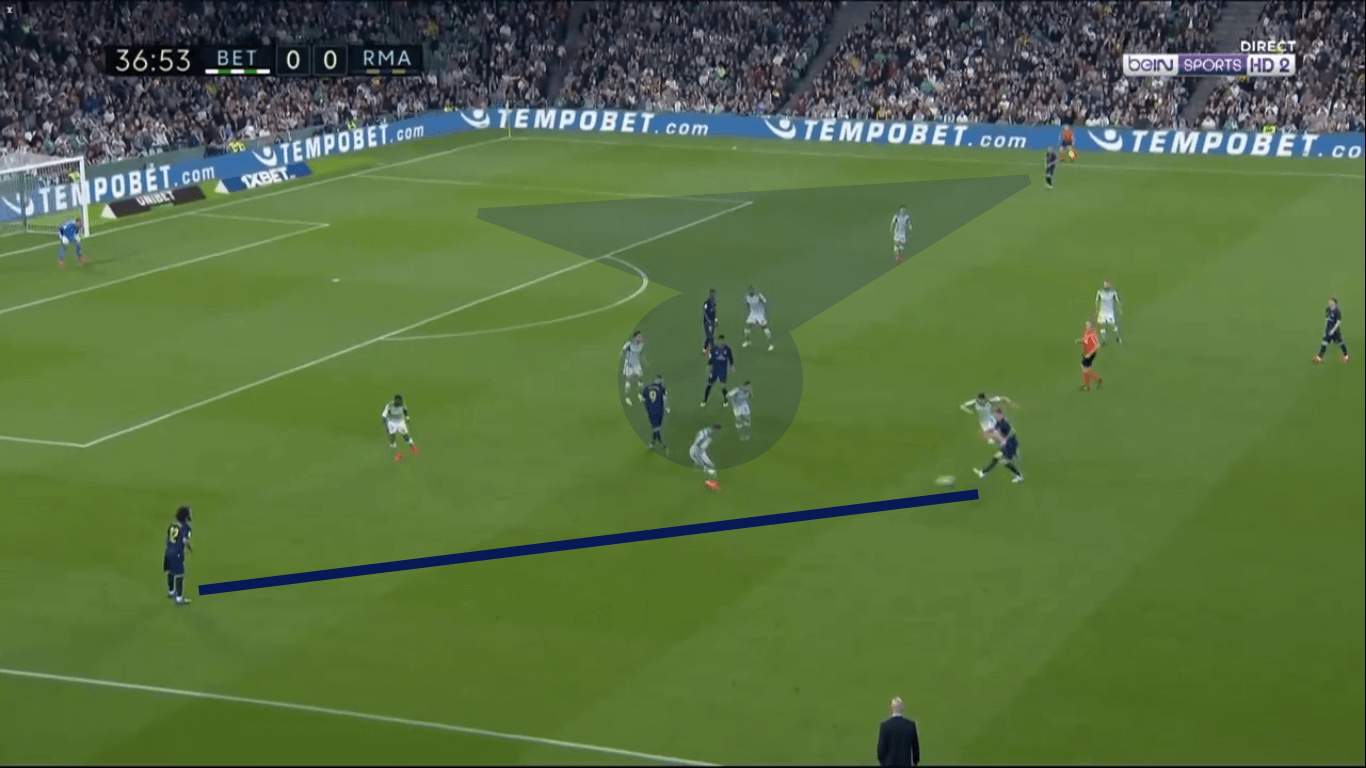
As Kroos looks for his options, you can see Marcelo is the only player in front of the ball offering any kind of an outlet. In fact, the cluster of players centrally means the pass must now go wide. Even still, Madrid had five players lined up against the Betis back four, yet everyone is simply reacting to play rather than proactively constructing the sequence. The entire right-half of the field is occupied by Vázquez and Álex Moreno, yet no one looks that way, nor does Vázquez attempt to attack that gap, even with Moreno’s back turned to him.
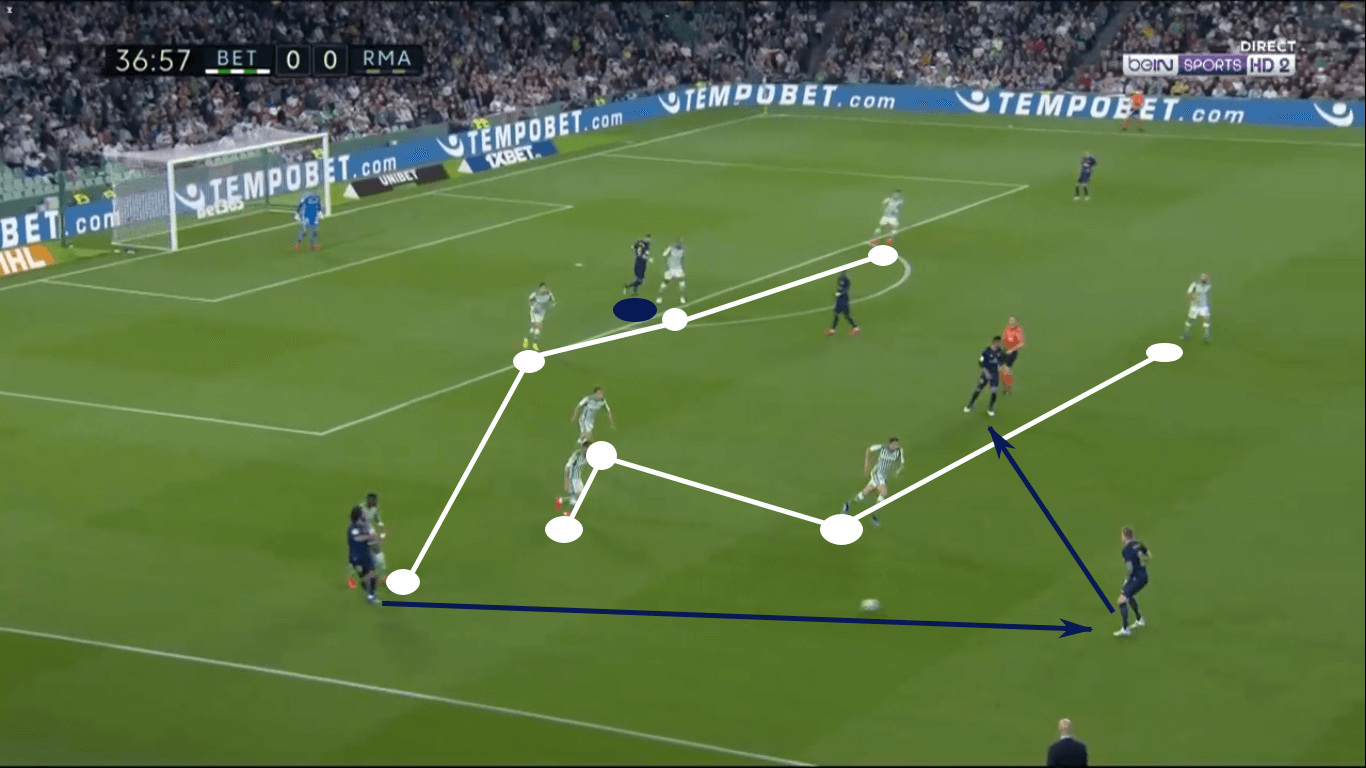
Surprisingly, Marcelo turned down the 1v1 opportunity and played negatively to Kroos. At this point, the entire Betis backline and midfield had recovered their shape. Kroos decided against skipping Casemiro to play Vinícius Júnior. The holding midfielder took a half-turn to attack the middle before absorbing contact, falling on the ball and getting whistled for handling. A promising attacking scenario, both through transition and later in open play, fell apart as Madrid opted to play it safe, sit in front of the defence and play each pass to feet.
How can Benzema and Madrid rebound?
Between injuries, form and lack of tactical cohesion among the available players, Real Madrid’s attacking issues run deep. To get back on track, the club must find a way to meld the talents of the available players into a coherent tactical system.
Let’s start with the man up top. As this scout report has shown, Benzema is much more effective creating and combining centrally. On his part, there needs to be a prioritisation of occupying the central channel and first five or so metres of the half space. Trusting his teammates to carry most of the burden in the build-up will ensure that Benzema is always an option as the team progresses to attacking the goal. He needs to record more shots from poacher range. With his current positioning and movement, those chances are currently few and far between.
Staying more central gives his wide forwards and defenders the dribbling space they so greatly desire. This is a “help me help you” type of relationship. As the wingers engage in their 1v1s, they’ll have more space to run into, allowing for increased distances to push the ball past an opponent without worry of the cover defender winning the ball. As his wingers start winning more of those battles, they’ll have more time and space to send Benz a quality service, something that has definitely been missing since mid-December. The best-case scenario is that the winger wins the 1v1 and pulls a centre-back away from Benzema, leaving him 1v1 in the box.
The wingers’ job isn’t finished. While the quality of the BBC was well above this current group, this group of wingers must learn to read Benzema’s movement and make runs in behind. A 4-3-3 without runs in behind will always result in a slow, stagnant attack. One of the benefits of lining up in this formation is that you have three high targets working off of each other. Those coordinative movements between the front three must improve. If Benzema pulls a defender into the midfield, a winger needs to make the run in behind. Even if the pass doesn’t isn’t sent, that run opens up pockets of space for others. Plus, as the winger’s defender releases him to re-join his line or account for another vulnerability, that means the initial runner is now untracked, allowing him to pick out the gaps in the defence before re-engaging.
Additionally, the midfielders must help out higher up the pitch. Though Kroos and Modrić are incredibly creative deep-lying players, they must make those forward runs at a greater frequency and offer a presence as Madrid attack the goal. Whether they’re crashing the goal or offering a negative crossing outlet, this attack needs more help high in the central channel, especially as they attack the goal.
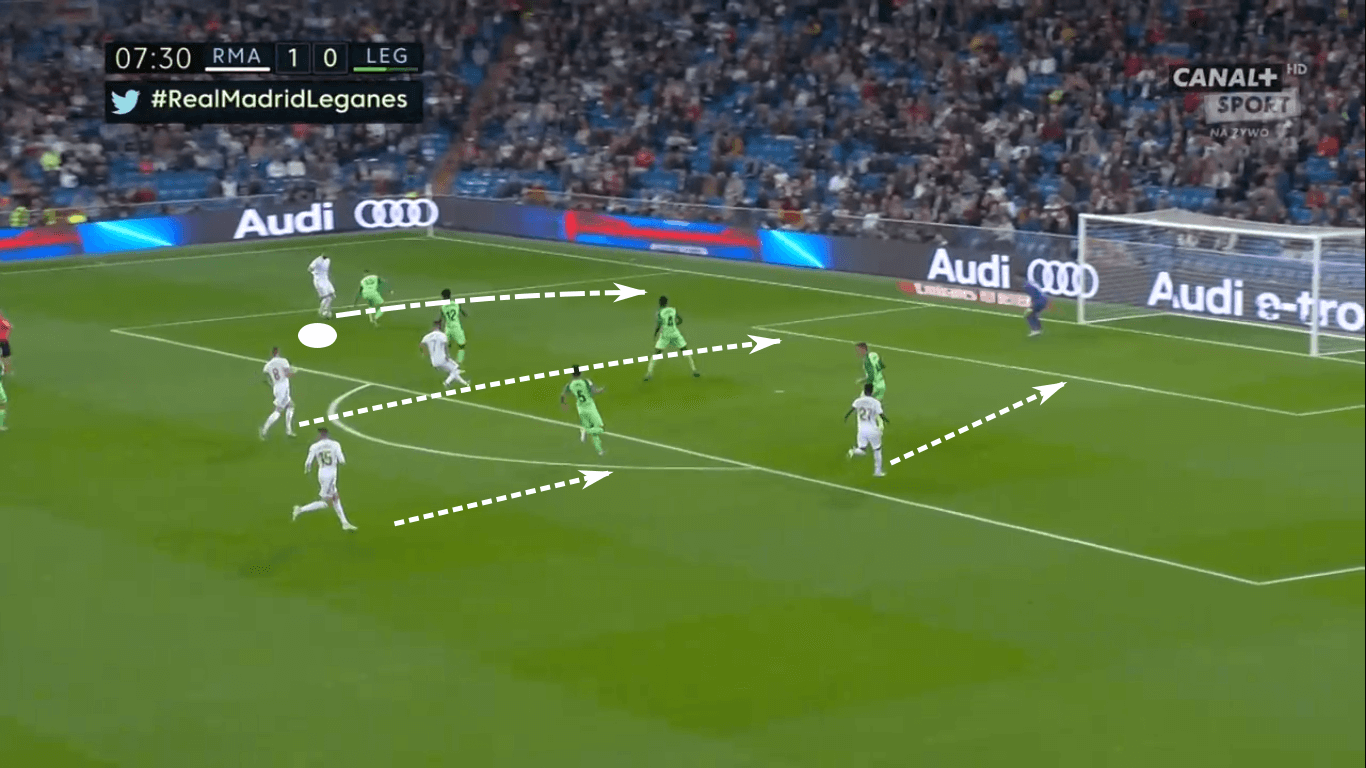
In the home leg against Leganes, we saw Benzema initiate the assault on goal from the left-wing. As he engaged his defender in a 1v1, Hazard, Kroos and Rodrygo all made runs into the box while Valverde made his way into the penalty arc.
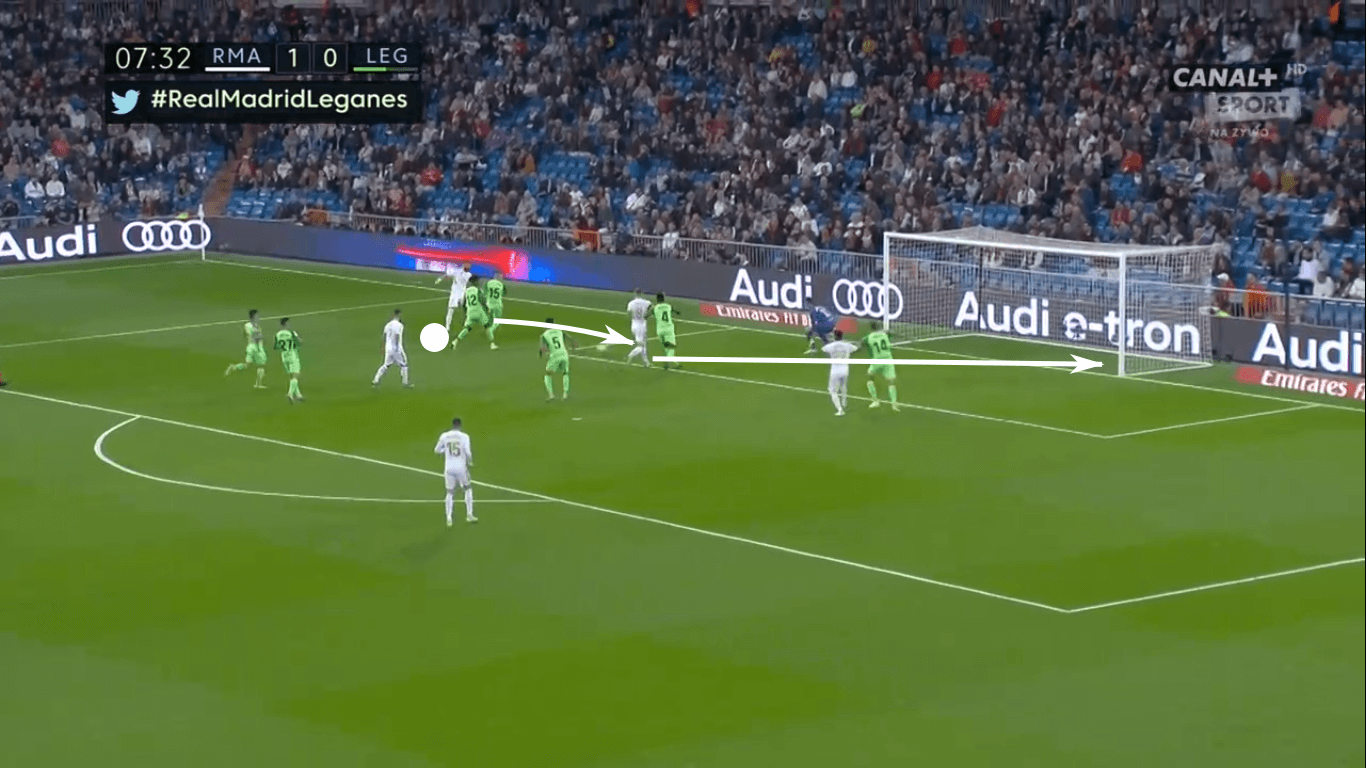
Benzema beat his mark and played a near post pass to Kroos. The German’s fantastic technical ability allowed him to score off of a difficult pass. In the end, it’s the numbers in the box and their respective positions that produced this goal. Madrid must recommit to getting numbers in the box before the defence has time to choke out the passing lanes.
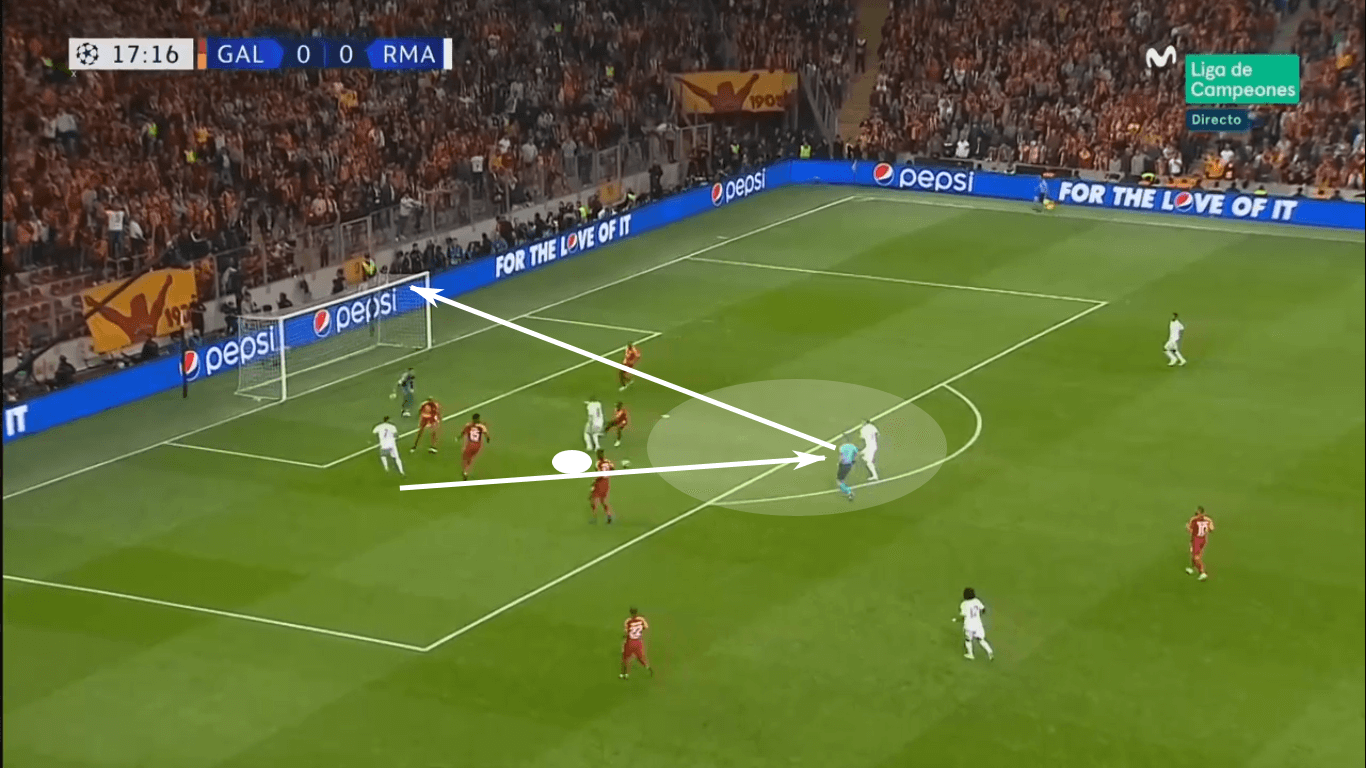
Against Galatasaray in Champions League play, Hazard took his run at the defence, forcing his mark backward while committing a second defender for coverage. As the Belgian engaged, Benzema drove the defence back with a central run to goal. That run sacrificed his move towards goal, but opened up a lane for the follow up run of Kroos. Once the second defender closed the space, Hazard released the pass to Kroos, who hit a thunderous drive into the top, right-hand corner of the net. Again, it’s that commitment to central runners into the box that led to a successful attacking move.
If Zidane wants to keep his preferred 4-3-3 but doesn’t think the current starting XI are doing the job, he has some other options. Among the active players, there are two players who stand out as willing runners with the pace to attack space, Luka Jović and Federico Valverde. Though Jović is typically Benzema’s backup at centre-forward and Valverde is a defensive midfielder by trade, both have shown an ability to get behind the lines. Jović has played in the wings in the past, so his transition would be an easy one.
In Valverde’s case, the young Uruguayan has embraced the role of the right-centre-midfielder. In Madrid’s midfield, Casemiro and Kroos have deeper roles, freeing the right-sided mid to push higher up the pitch. In that role, Valverde has interchanged with the wide forwards, showing an ability to win 1v1s and the pace to easily outrun opposing defences. If he were to make a Bale-esque transition from a more defensive role to right-forward, Real Madrid could add an incredibly dynamic element to the attack. He’s an intelligent player who could learn the position and recognise Benzema’s cues. This is definitely an outside the box thought experiment, but it’s one that could pay huge dividends.
Finally, there’s also the possibility of changing the formation to a 4-4-2 or 3-5-2. In the 4-4-2, they could play a diamond midfield and Jović would join Benzema up top. Since Benzema likes to drop in and clear space centrally, Jović has the pace and willingness to play off of the Frenchman. That would also free up Isco to play as a true #10 and create space on the wings for the outside-backs.
For the 3-5-2, since they would have plenty of defensive coverage with the additional centre-back and Casemiro playing as the deepest midfielder, Marcelo would have the freedom to focus on the attack without much concern for backtracking defensively. He’s a far more dangerous crosser of the ball than Mendy, plus he’s comfortable underlapping, making him a difficult player to contain.
Conclusion
The stoppage in play comes at a great time for Los Blancos. First, it gives Hazard some time to recover from his ankle injury. However, even if he can’t return when play does resume, Zidane will surely appreciate the additional time to work out his tactics to fit his available personnel. With Madrid down 2-1 to Manchester City in their Champions League tie and now trailing Barcelona in La Liga, there’s little margin for error in this stretch run.
Getting Benzema back on track is key. He’s easily the most lethal scorer on the team. Without his goals, Madrid will likely suffer another trophy-less season. While the past few months have looked like a slump, he has a proven record of success and can rebound from this decline. It will take the support of his teammates and a development of their collective chemistry, but this side is far too talented to remain in a rut. Zidane has consistently placed his players in positions where they can experience success, so look for him to use this time effectively to correct the tactical missteps of his side and get that Formula 1 car of his back on track.

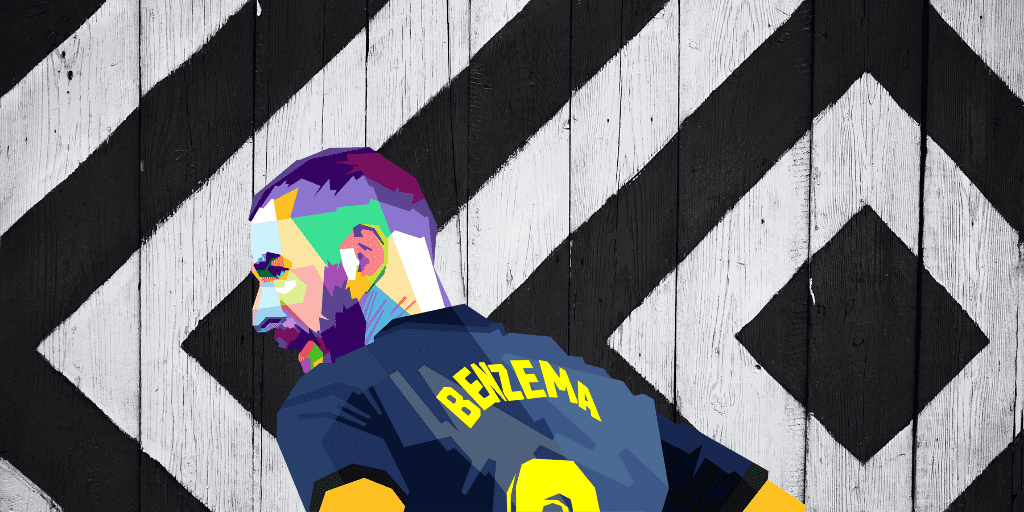



Comments